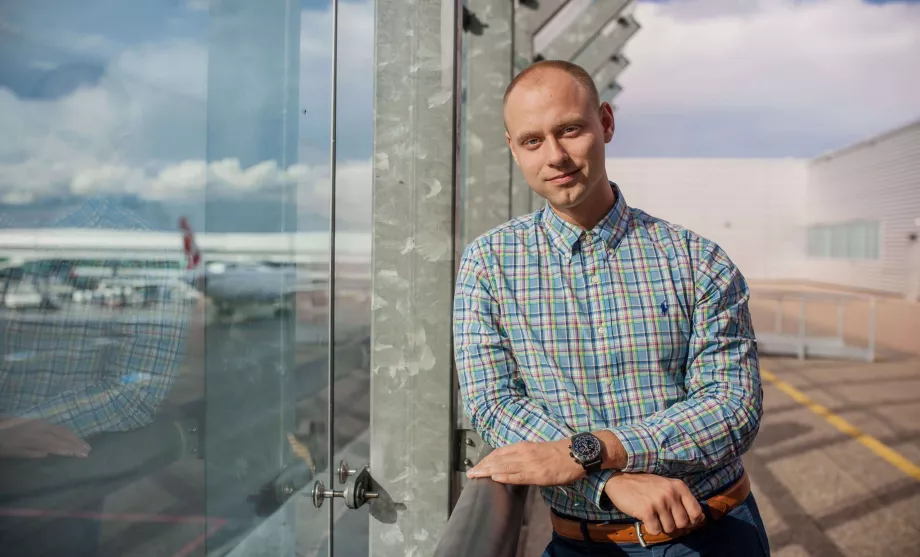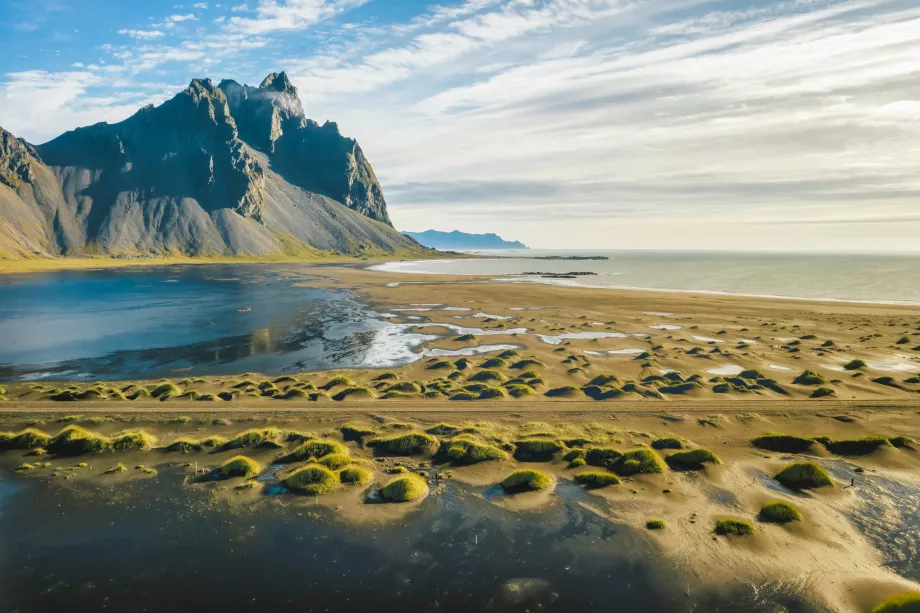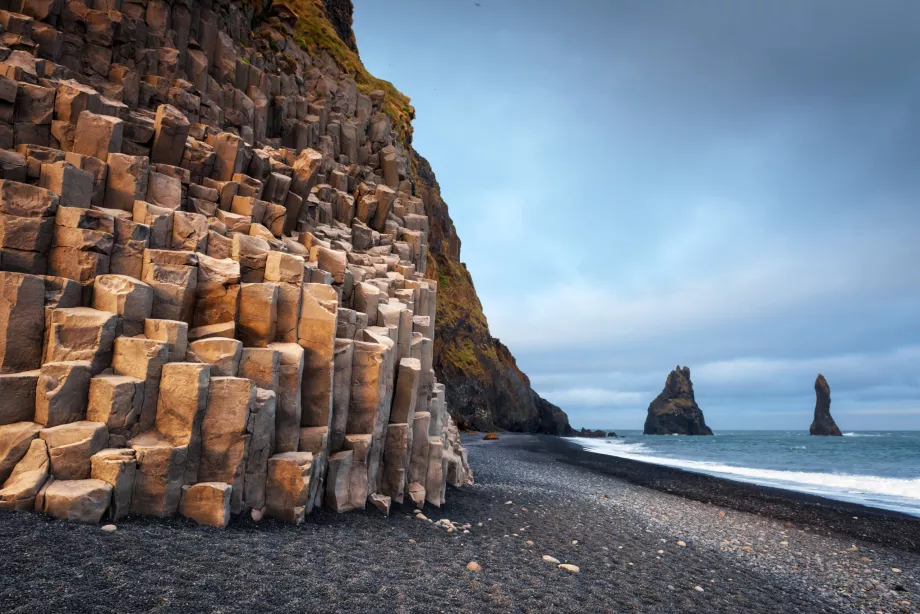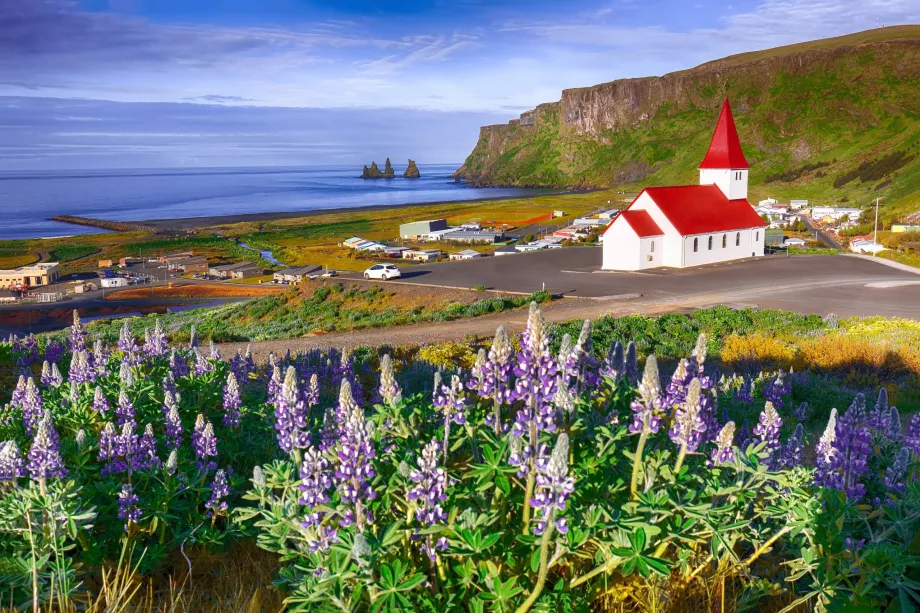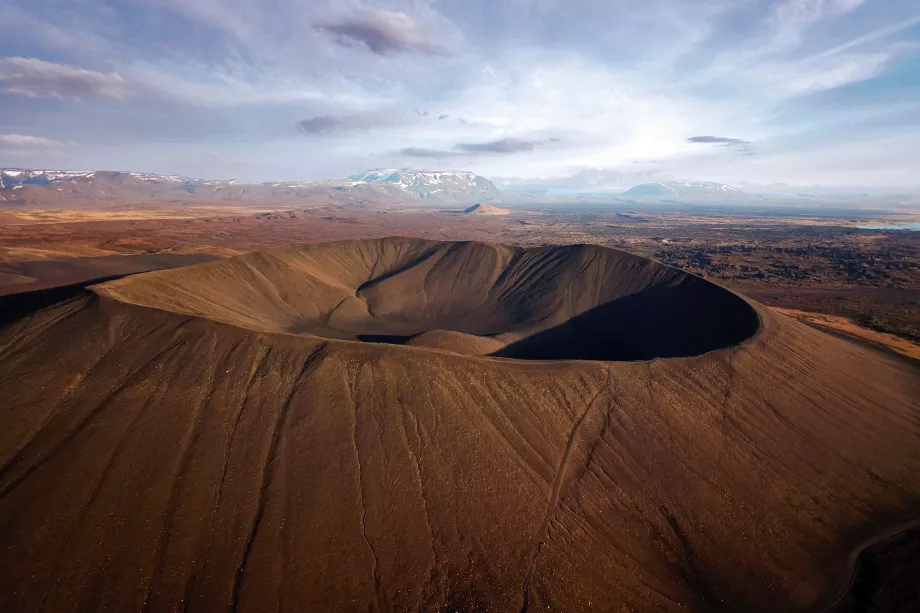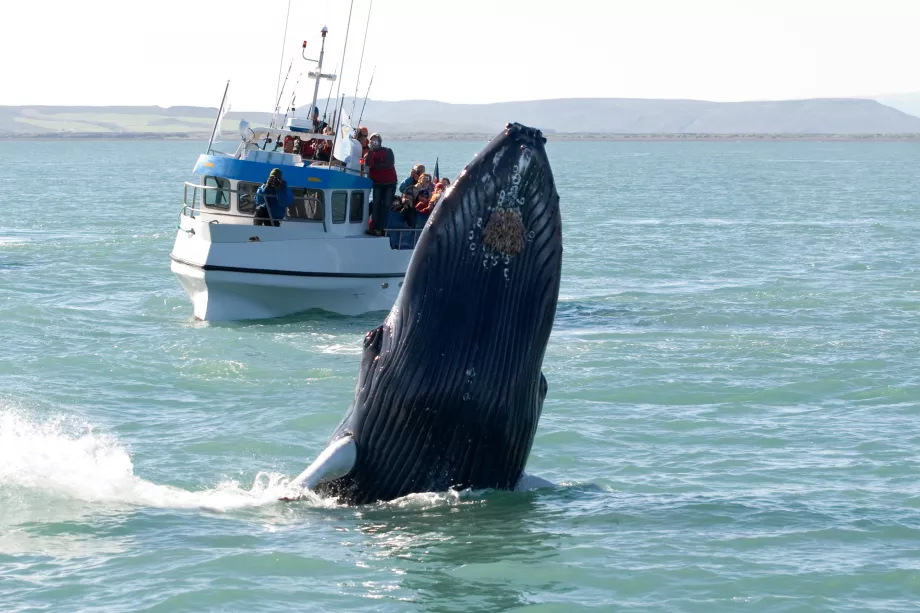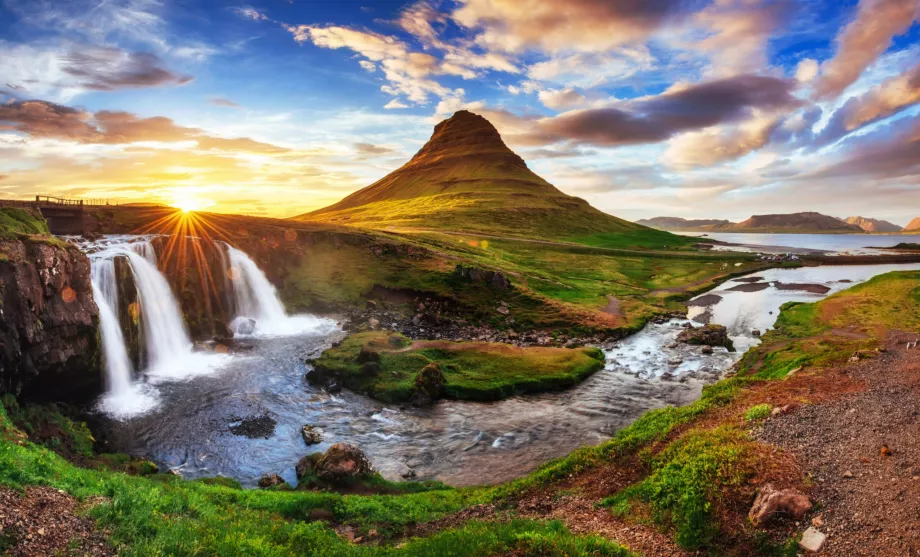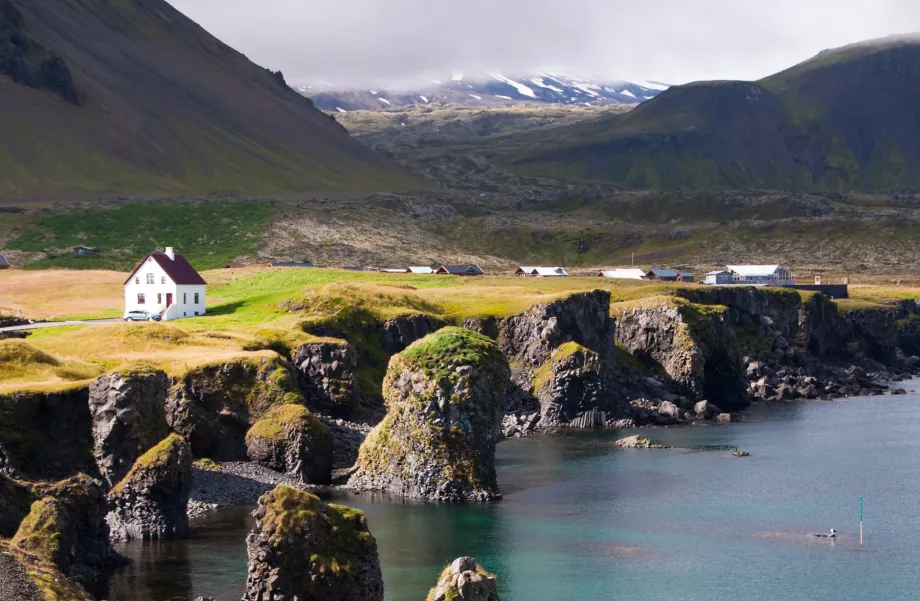Islândia - onde dormir

Going on holiday to Iceland? Find out which locations and cities are the best, cheapest and most practical for accommodation in Iceland.
Where to stay in Iceland
Find all the available places to stay, for example on the popular Booking.com.
Find accommodations in Iceland
If you're heading to Iceland during the summer holidays, in June or September, book your accommodation well in advance, even 6 months or more! Deals are dwindling fast and prices are rising significantly as your travel date approaches.
Reykjavik and the Southwest
The most densely populated southwest of the island is also one of the most popular locations for living. Here you'll find the capital and by far the largest city, Reykjavík, as well as the only major international airport, Keflavík. Several easily accessible natural attractions of the so-called "Golden Circle" are also concentrated here.
Reykjavík - the largest concentration of hotels, guesthouses and cheaper hostels, as well as the best availability of services of all kinds, car rental companies or local travel agencies. You can stay here for the whole stay if you only want to go on day trips, but you almost certainly won't miss at least the first or last night because of the proximity to the airport. Rates for rooms with shared bathrooms start at 55 eur per night, the lowest available in Iceland.
The Golden Circle - probably Iceland's most famous tourist circuit takes you through several natural attractions. If you're looking for quieter accommodation in the countryside, but with excellent access to Reykjavik and very decent prices even below 73 eur per night in family-run guesthouses, then stay here.
South Iceland
The popular south coast is packed with tourist attractions, and due to the relatively long distance from Reykjavik, it's not really worth coming here for day trips. You won't find a big city here, but there are plenty of small hotels or guesthouses near each of the attractions. We always provide tips on specific establishments in the location details.
Vík í Mýrdal - a well-known tourist village, you will find plenty of accommodation in the area, the lowest prices here start at about 92 eur per night. It is a strategic location with many attractions within 20-30 km.
Höfn - the area around the largest town on the south coast is also often the most remote place to visit when travelling independently on the south coast. In and around the town you will find a wide range of country hotels and guesthouses with prices from about 110 eur.
North Iceland
The coastline in the north is the second most common destination for tourists, partly because of its high concentration of attractions, partly because of its exotic remoteness. There are three main tourist centres in northern Iceland:
Lake Mývatn - the area around the lake boasts a large number of attractions crammed into a small space. Accommodation here is offered by larger and expensive tourist hotels, but cheap guesthouses with prices from 92 eur can also be found here.
Húsavík - a popular tourist town on the shores of the bay with the largest whale population in Icelandic waters. Hotel prices are high right in Húsavík, but you'll find some cheap guesthouses in the surrounding countryside from 73 eur per night.
Akureyri - the second largest city after the Reykjavik conurbation - may not be one of the main tourist attractions, but it is strategically located roughly halfway along the northern Ring Road and offers a wide range of accommodation. However, prices are higher than in Reykjavík, for example, and start at 92 eur per night.
West Iceland
The very sparsely populated Westfjords area beckons for a stay in unspoilt yet relatively accessible nature. Numerous wide fjords offer spectacular views and a minimum of tourists will offer a calming holiday. Look for accommodation in these places:
Peninsula Snæfellsnes - The most visited area of western Iceland with a beautiful rugged coastline, glacier and cliffs with beautiful lighthouses. Here you will find the famous Kirkjufell mountain and the famous village of Arnarstapi.
Westfjords - the main part of the west coast, called Vestfirðir (Westfjords) in Icelandic, attracts hundreds of bays, mountains and uncivilized landscapes. Accommodation here is highly decentralised and you'll usually come across a hotel or guesthouse standing loose in the landscape.
Ísafjörður - the largest town in the west will offer shops, restaurants and quite a lot of accommodation. There's an airport here with domestic flights to Reykjavik, as well as a dock for boats heading to the completely cut-off Hornstrandir peninsula, which is Iceland's purest countryside.
East Iceland
Fjord lovers will enjoy East Iceland with its monumental mountains, minimal tourists and pure nature. Most of the fjords are also perfectly accessible, as the main Ring Road 1 winds along them. Stay for 1 to 3 nights and enjoy Iceland in its raw form. Unlike the western fjords, the eastern ones have a much better infrastructure but are much further away from Reykjavik.
Egilsstaðir - the largest city in the east of the island with all the necessary facilities will work as a great stop on your sightseeing tour. You can visit waterfalls, canyons and the aforementioned fjords in the area.
Hotel prices in Iceland
Iceland is one of the world's most expensive destinations. You can get a night in a 2-bed room in smaller family-run guesthouses, usually with shared bathrooms (but usually very well maintained), ranging from 73 eur to 128 eur depending on the attractiveness of the destination.
Classic 3* hotels usually don't go below 147 eur, with prices usually around 183 eur for a night in a 2-bed room. Prices are slightly lower in Reykjavik, mainly due to the high competition. Conversely, expect higher prices even from 257 eur per night in hotels in touristy or remote locations.
Check prices for accommodation in Iceland on booking.com, for example.
Prices during winter are usually 30-40% lower than in the peak summer season.
During the summer holidays, the most desirable and cheapest accommodation is booked months in advance.
Camping in Iceland
A popular way to get around high hotel prices is camping and camping. However, due to the skyrocketing number of tourists and their recklessness, the rules have been adjusted after 2015 and completely free camping anywhere is practically impossible anymore in the most popular places.
What are the rules for sleeping in a car?
If you're thinking of completely blowing your accommodation bill by sleeping in your car in free car parks, you'll be acting illegally. Sleeping in your car outside of campsites is banned throughout Iceland, and given the locals' bad experiences with tourists, there's a pretty good chance you won't be able to avoid a fine.
So you can only sleep in a campervan in designated places, which are only campsites.
Camping and sleeping in the open - is it possible?
Officially, free "wild camping" is not allowed anywhere in built-up areas (i.e. within sight of dwellings). Outside populated areas, sleeping outside is allowed for a maximum of 1 night with the landowner's permission if you are on private land.
If you pitch your tent or park your car in a really remote area without any facilities, there is a high probability that you will be able to spend your entire holiday in Iceland this way. However, you need to think about whether this kind of travel is actually feasible in terms of basic hygiene and comfort.
Campsites in Iceland - prices, maps, conditions
Fortunately, there are a large number of official campsites in Iceland, even in the most remote areas of the island where you might not expect to find a campsite. There are always toilets, running drinking water, usually hot, and often internet and electricity.
Generally Icelandic campsites are well maintained, clean and civilised.
You can see a map of all Icelandic campsites on nat.is or tjalda.is, for example, which provide complete information on all campsites in Iceland.
Prices are always calculated per person and most campsites do not differentiate whether you sleep in a tent or a car. The usual prices for campsites in Iceland are as follows:
- 1 700 isk up to 2 500 isk per adult (depending on the attractiveness of the site and the facilities).
- 400 isk up to 600 isk for electricity connection
- 100 isk for the use of a shower, but many campsites offer free showers
Virtually all campsites in Iceland allow payment by card.
Most campsites are only open between May and September, there are very few year-round campsites, but this is logical. Winters in Iceland are long and harsh with very strong winds that add to the already low temperatures.
Camping card
If you're only going to be camping in Iceland for more than 14 days, it's well worth getting a Camping Card, which is redeemable at 40 campsites across the island, certainly not all of them. See the map of campsites that accept the Camping Card.
The Camping Card costs 167 eur and can be used for 28 days. It can be purchased online or at many locations across Iceland, see the official website utilegukortid.is.
Ainda há perguntas?
Se tiver perguntas ou comentários sobre o artigo...
